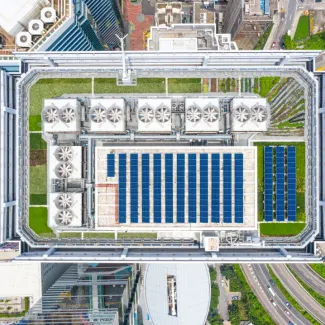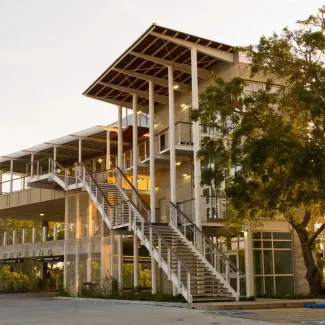ROI of High-Performance Design
Buildings designed with high-performance elements reduce negative impacts on the environment and improve the health and well-being of occupants. Maximize your return on investment (ROI) with high-performance design.

Demand for high-performance design
As awareness of the benefits of high-performance design grows, demand has also grown in this sector. For example, since 2012, nonresidential net-zero buildings have increased by more than 700%.(1) Not only do high-performance buildings have environmental and health benefits, but growing evidence demonstrates economic benefits as well.
Historically, the economics of high-performance design have often been seen as a barrier to implementation. A report by Darko on the barriers of green building adoption indicates that cost is the second most reported barrier in the adoption of green buildings second to lack of information and awareness.(2) While there is a perception that high-performance buildings are not cost-effective, many studies have found that high-performance buildings have many economic benefits such as an increased market value, lower operating and whole lifecycle costs, as well as indirect financial savings through improved health, lower absenteeism, higher productivity, and increased attraction and retention of employees.(3)
How to use these talking points
Each of us needs to seek out opportunities to engage with multiple audiences, and these talking points are intended for use in your conversations with clients, potential clients, civic leaders, vendors, contractors and other architects. This helps demonstrate that architects are trusted partners in strengthening society, designing solutions, and transforming communities.
Steps for engaging with the talking points
- Identify your audience: client, community stakeholder, civic leader, vendor, contractor, etc.
- Choose one of several “Talking Points” to view the research conducted to support your argument.
- Investigate the cited reports for more information.
- Use this talking point in your communications to enhance your argument and strengthen your message.

Owners and developers are interested in the financial upsides of high-performance design, particularly increasing asset or market value. Green labeling and operational cost reductions help boost a

Out-of-pocket operational expenses add up fast and can account for up to 15% of a company’s total business expenses, creating a huge incentive for owners, tenants, and society to drive down costs with

Sustainable, high-performance design can cause concerns about high up-front costs, but an integrated design process, smart tradeoffs, and various grants and incentives are proven to reduce initial

Green labels and high-performance design elements help attract and retain talent and increase staff productivity and wellness by providing a compelling and safe workplace.

Our indoor environments have a direct impact on our health and wellness. High-performance design elements, such as air quality, thermal comfort, and daylighting, can significantly improve occupant

Architects play a pivotal role in reducing embodied carbon—a significant contributor to global annual emissions—within the built environment to address environmental concerns and reach decarbonization





